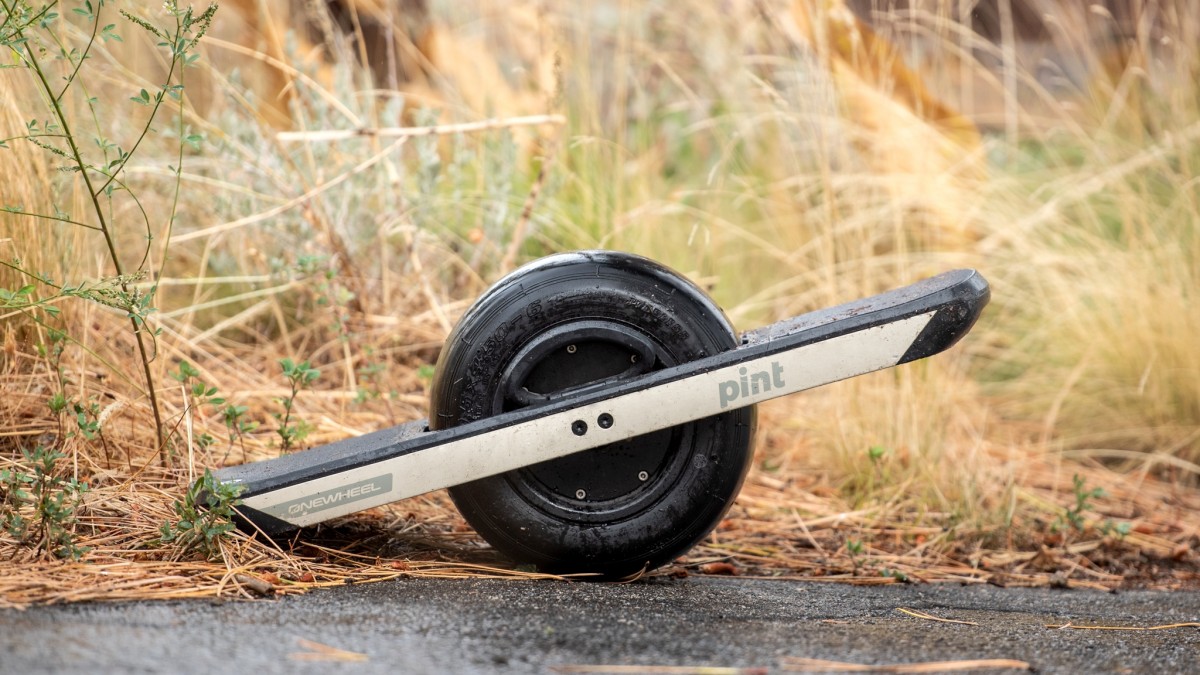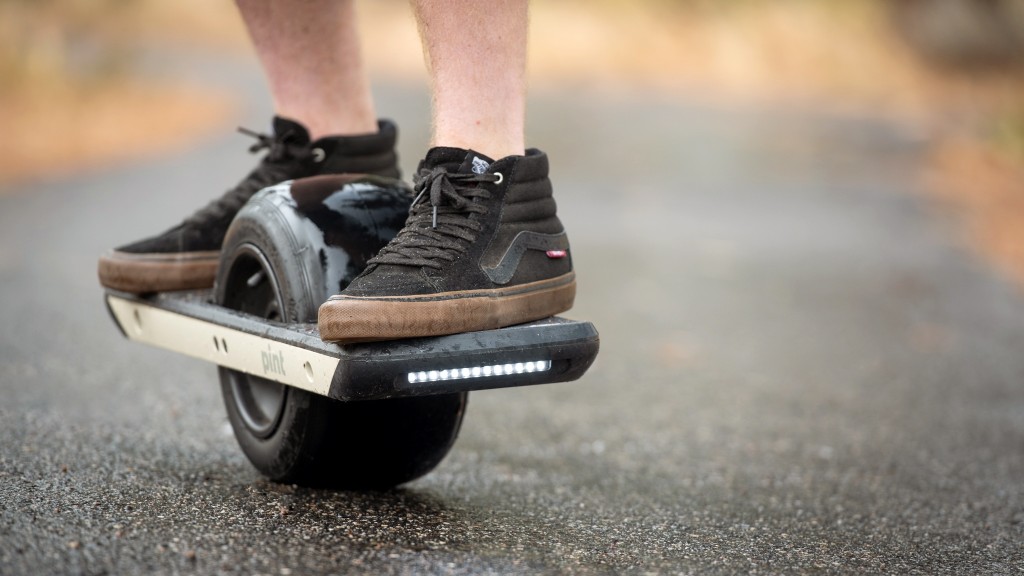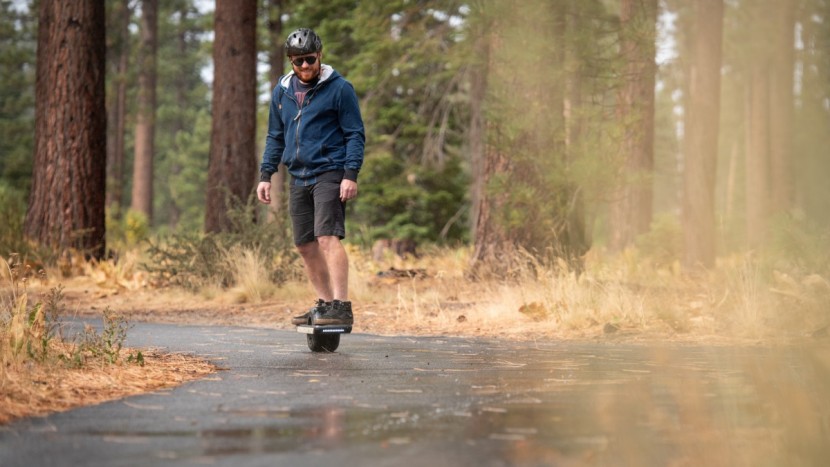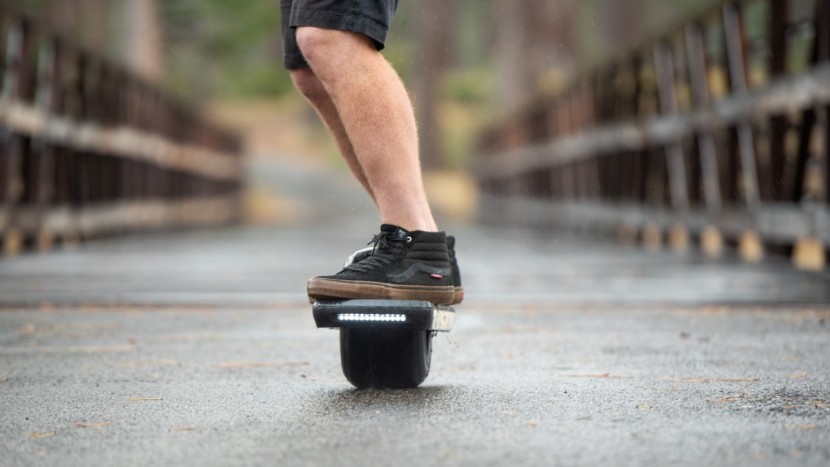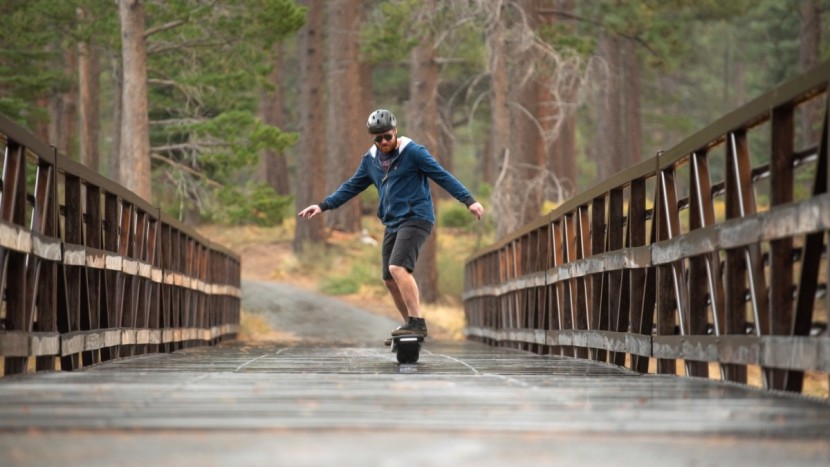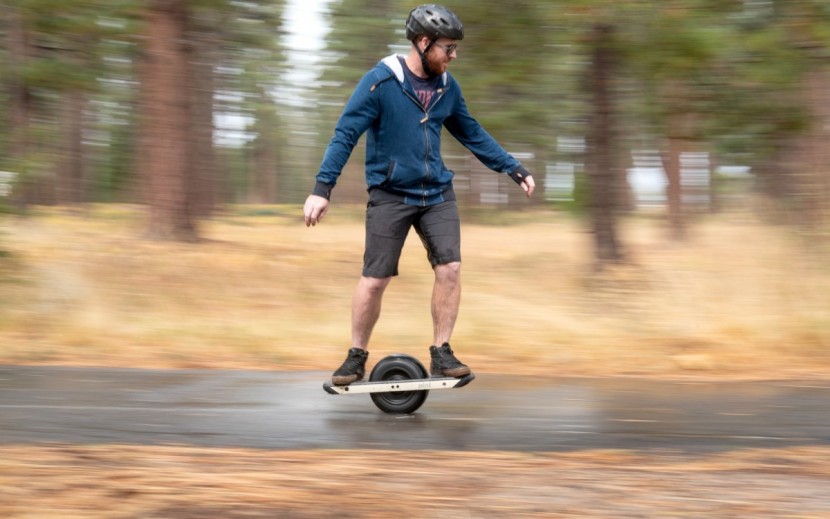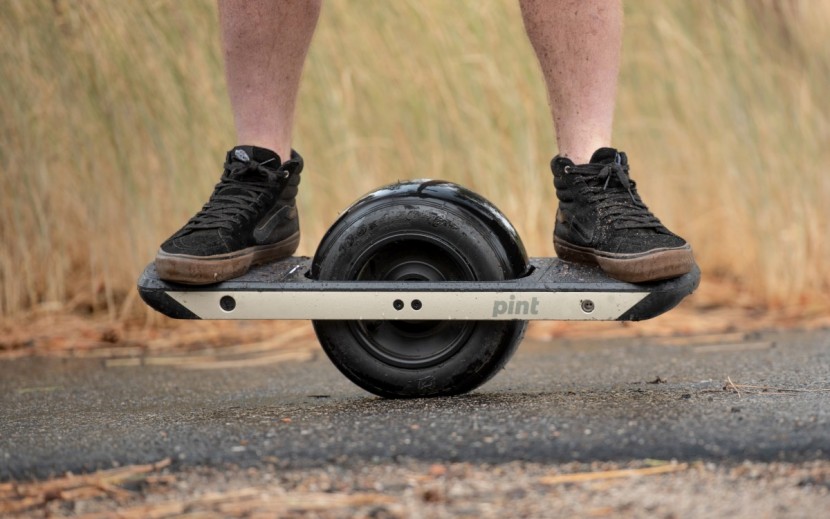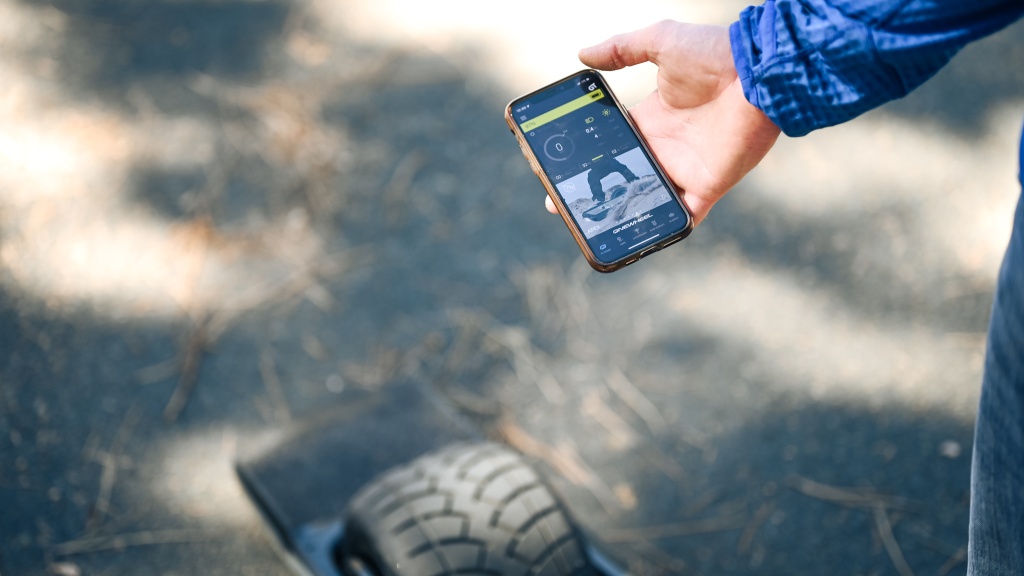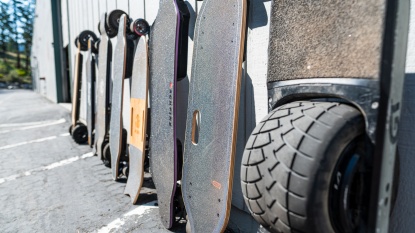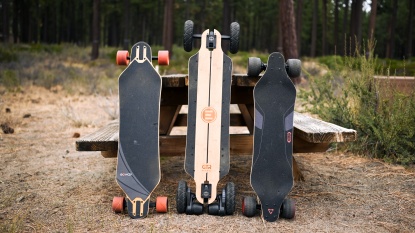Our Verdict
Compare to Similar Products
 This Product Onewheel Pint | |||||
|---|---|---|---|---|---|
| Awards | A Budget-Friendly Onewheel Option | Best Overall Electric Skateboard | Best Budget-Friendly All-Terrain Option | Best Budget-Friendly Option | |
| Price | $1,050 List | $849 List | $999 List $699.00 at Amazon | $499 List $499.00 at Amazon | $429 List $349.00 at Amazon |
Overall Score  |
|||||
| Star Rating | |||||
| Bottom Line | If you want a board that can venture off the pavement, the Pint is the perfect choice | This board has power to spare, solid brakes, and a nice remote — all at a price point under a grand | This all-terrain board with flatless tires delivers delivers an excellent ride for the price point | A fun, affordable ride for beginners who can start out slow but choose faster speeds with experience | Comfortable, fast, and tailored towards those who already know what they're doing, this board is a great budget options for experienced riders |
| Rating Categories | Onewheel Pint | Backfire Zealot S2 | JKing Jupiter-01 Al... | Meepo V5 | Backfire G2 |
| Ride Comfort (30%) | |||||
| Range (20%) | |||||
| Braking (20%) | |||||
| Speed (10%) | |||||
| Hills (10%) | |||||
| Beginner Friendly (10%) | |||||
| Specifications | Onewheel Pint | Backfire Zealot S2 | JKing Jupiter-01 Al... | Meepo V5 | Backfire G2 |
| Tested Maximum Range | 10.0 miles | 26.1 miles | 12.3 miles | 10.9 miles | 15.9 miles |
| Tested Maximum Speed | 14.2 mph | 30.8 mph | 25.5 mph | 24.6 mph | 23.5 mph |
| Tested Stopping Distance | 14 ft | 21 ft | 23 ft | 24 ft | 31 ft |
| Measured Weight | 25.5 lbs | 23.3 lbs | 23.2 lbs | 17.6 lbs | 17.8 lbs |
| Measured Time in Uphill Grade | 32 seconds | 26 seconds | 27 seconds | 58 seconds | 66 seconds |
| Measured Charge Time | 114 minutes | 123 minutes | 244 minutes | 180 minutes | 216 minutes |
| Measured Deck Length | 27" | 39.2" | 39.8" | 38" | 38.2" |
| Riding Modes | Redwood Pacific Elevated Skyline |
Eco Sport Turbo |
1 2 3 4 |
Low Medium High Pro |
Eco Sport Turbo |
| Battery | Lithium Ion (NMC) | 58.8V 8Ah, 403Wh 14S2P Samsung 40T 21700 Cells | Lithium Ion | 10S2P 4Ah Lithium Ion | 42V 5.2Ah, 187Wh 10S2P Changhong Sunpower Cells |
| Manufacturer Weight Limit | 250 lbs | 265 lbs | 330 lbs | 330 lbs | 265 lbs |
| Manufacturer Deck Material | Composite Material | ABS+Glass fiber+maple Composite deck | 7 Ply Northeast Maple 2 Ply Canadian Maple 1 Ply Fiberglass |
8 Ply Canadian Maple | 8 Ply Canadian Maple |
| Wheel Size | 267 mm | 96 mm | 152 mm | 90 mm | 96 mm |
| Truck Width | N/A | 8" | 9" | 8" | 7" |
| App available | Yes | Yes | No | No | Yes |
| Lighting | Yes | Yes | Yes | No | No |
Our Analysis and Test Results
Ride Comfort
The ride comfort of the Pint makes up 30% of its total score. In this metric, we investigated how comfortable this board is on rides of all lengths and difficulties. The Pint did very well in this series of tests and offered one of the best rides we have seen to date, earning it a score just short of the top performers of the group.
The Pint does an outstanding job at handling bumpy and uneven terrain, easily cruising over obstacles that would stop plenty of other skateboards in their tracks. It also does a great job of handling cracks and other sections of damaged pavement, flying over them without a hint of hesitation. This board feels playful and fun, but it can be a little fatiguing to ride for long periods, especially for your leading leg and your core muscles.
Range
Our next metric focused on the effective range of the Pint, comprising 20% of its final score. This is a particularly important metric for this board since it essentially transforms into a giant paperweight when its battery is dead and can't be ridden around manually, like a typical electric skateboard. It didn't do especially well in this metric compared to the top-tier models, but given the fact that it is much smaller and much more affordable than its bigger cousins, this is to be expected.
Our range test is quite simple. We ran the Pint on flat ground at medium speed, measuring the maximum distance we were able to travel and taking note of whether the board started getting slower or began to struggle as the battery level dropped. The Onewheel made it for about 10 miles before completely dying, but the last tenth of a mile or so was quite a struggle. This was two miles further than we expected based on the manufacturer's claims.
We also timed how long it took for the battery to recharge when it was completely depleted and found that it took just under two hours for the Pint. This option offers a range that many riders may find to be plenty enough for their needs, especially when considering its price.
Braking
When riding a fast electric skateboard, you have to be able to stop, so braking was awarded 20% of the overall score of the Pint. We compared how quickly each board can stop on flat ground from a moderate speed and how easy it is to control your speed when descending hills. The Pint finished out our tests with another top-notch performance, again earning one of the highest scores of the group.
The Pint makes it easy enough to ride down a steep hill, allowing you to go as slow as you want. It also stops exceptionally quickly on flat ground, only taking about 15 feet to come to a complete stop when traveling at a speed of around 12 mph. The board naturally forces you to lean on your back leg to stop, keeping your body in a better position for braking.
You probably could stop at an even shorter distance, but the back of the board would drag on the ground and could cause you to lose control. Once again, this relatively inexpensive option offers excellent value with high scores in numerous metrics.
Speed
Speed accounts for 10% of the Pint's final score. In this metric, we compared the top speed of each board and their acceleration to determine scores. The Pint isn't the quickest board we have seen so far, but it is faster than plenty of other boards we have tested, earning it a decent score.
For our speed test, we timed how long it took the Pint to complete a measured course, allowing it to reach its top speed before entering the track. We repeated this multiple times, averaging the results to come up with a top speed. In our tests, this board hit just a bit more than 14 miles per hour in our tests on flat ground — just a bit shy of the claimed top speed of 16 miles per hour by the manufacturer.
We found the self-balancing circuitry began to push back at this speed and prevented us from going any faster, but we did hit the 16 mph speed when going downhill with this board, according to its companion app.
To compare the acceleration of each board, we had the Pint start from a stationary position and hit a 50-foot track while recording its time. This board did exceptionally well, having one of the fastest average times of the group. It's exceptionally quick to start and doesn't take long to hit its maximum speed.
Hills
Next, we tested out how effectively each of these boards can climb hills of varying steepness, which accounts for 10% of the final score for each product. To score the performance of the Pint, we started on a hill with a 5% grade, then worked up steeper and steeper hills until it couldn't make it up. The Onewheel Pint did exceptionally well in this metric, earning a score that was well above the average of the entire group.
This electric skateboard zoomed right up a hill with a 14-15% grade without slowing down or hesitating in the slightest. We think this board had plenty of power to go up an even steeper hill, but the bottom of the board would begin to drag if the hill was any steeper.
Beginner Friendly
The remaining 10% of the total score is dedicated to how easy each ESB is to use for a beginner. We took a deep dive into each board's beginner features and independently weighed them to determine a combined score. The Pint, as with any product from Onewheel, has a bit of a learning curve given its single-wheeled construction and scored lowly relative to its competition. We'd argue that this board is worth the time spent learning, but some will want to seek a more friendly option to learn the sport.
To change modes on the Pint, you'll need to use an app, given this design doesn't have an actual remote. We found the app easy to use and adjust features of the Onewheel — it even offers friendly tutorials. One of the app's offerings, simple stop, gives riders the ability to gently ride backward to disengage the board, making it potentially easier for beginners to step off. Riding on a single wheel is simply going to have a learning curve, even with the intelligence of the board's self-balance.
The Pint is significantly lighter than some of its siblings from Onewheel, offering easier transport at a measured weight of 25.5 pounds.
Should You Buy the Onewheel Pint?
If you always wanted to get a Onewheel, self-balancing skateboard of your own and couldn't afford the price tag of the super premium models, the Pint is for you. This board is fast, climbs hills easily, and has a reasonable range, all while being exceptionally fun to ride at a price that is about half that of the top boards.
What Other Electric Skateboard Should You Consider?
If you love the idea of a monowheel electric skateboard but also want something a little faster and more rugged with a larger range, the Onewheel GT is the way to go. For those that are in the market for a traditional, four-wheeled ESB, the Ownboard Carbon Zeus Pro is hard to beat, especially when it comes to speed and range. If you're just entering the world of electric skateboards and don't want to empty your bank account to purchase one, the Backfire Zealot S offers commendable performance at a reasonable price.


